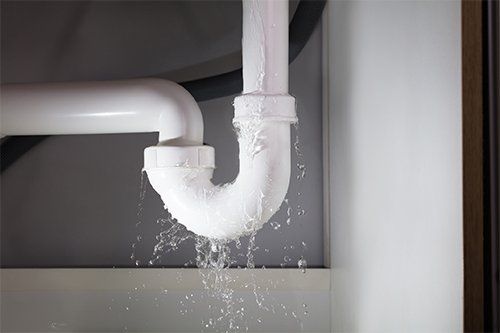An expert remodeler or contractor can take inventory of the space available and the present placing of the sink making suggestions about installing a far more compact option which won't only conserve room but also provide the room a very healthy look.
Images about Fix Bathroom Sink Leak

It is for sure a good plan to acquire a specialist decorator's opinion prior to you making any major changes to your bathroom, since like a number of decorating projects, you may start with simply swapping the sink and also the subsequent thing you know, you are re-tiling the entire bathroom.
plumbing:bad water leak under bathroom sink

If you have started searching for bathroom sinks, you may well have previously become overwhelmed with the sheer breadth of options offered for you. It could be difficult task to purchase one in case you haven't prepared yourself in advance. Most stem pipes will have a threaded connection and shouldn't be too tight.
Repair Your Bathroom Sink Leak: A Step-by-Step Guide -Homeadviceguide

There are five main types of bathroom sinks that you can choose from for your bathroom. Additionally you need to make sure the material of the area of yours top matches the materials used in the remainder of your bathroom. There's no point choosing your dream bathroom sink, only to find that it does not easily fit in, or alternatively that it looks way too tiny within your bathroom.
bathroom sink drain leaking

leak – How to fix leaking bathroom sink drain where PVC meets ABS

A Quick Guide To Checking For Leaks Under Your Sink – Green Living

New bathroom sink drain tailpiece wonu0027t stop leaking Terry Love
How to fix a leak under your sink.

How to Handle Leaking Pipes Under the Bathroom Sink Aggressive

4 Ways to Fix a Bathroom Sink Leaking Underneath (Fast u0026 Easy!)

How To Fix Bathroom Sink Drain Leaks Underneath Gasket, Threads [SOLVED]

Leaky bathroom sink help. My sink is leaking at the 2 green arrows

Bathroom sink drain leak – not sure how to fix – DoItYourself.com

Common Sink Leaks You Could Probably Fix Yourself

Related Posts:
- Wooden Bathroom Sink Unit
- Extra Hole In Bathroom Sink
- Large Undermount Trough Bathroom Sink
- GFCI Distance From Bathroom Sink
- Satin Nickel Bathroom Sink Faucets
- Black Mold In Bathroom Sink
- Quality Bathroom Sinks
- Foul Smell From Bathroom Sink
- How To Install P Trap Bathroom Sink
- Bathroom Sink Shutoff Valve